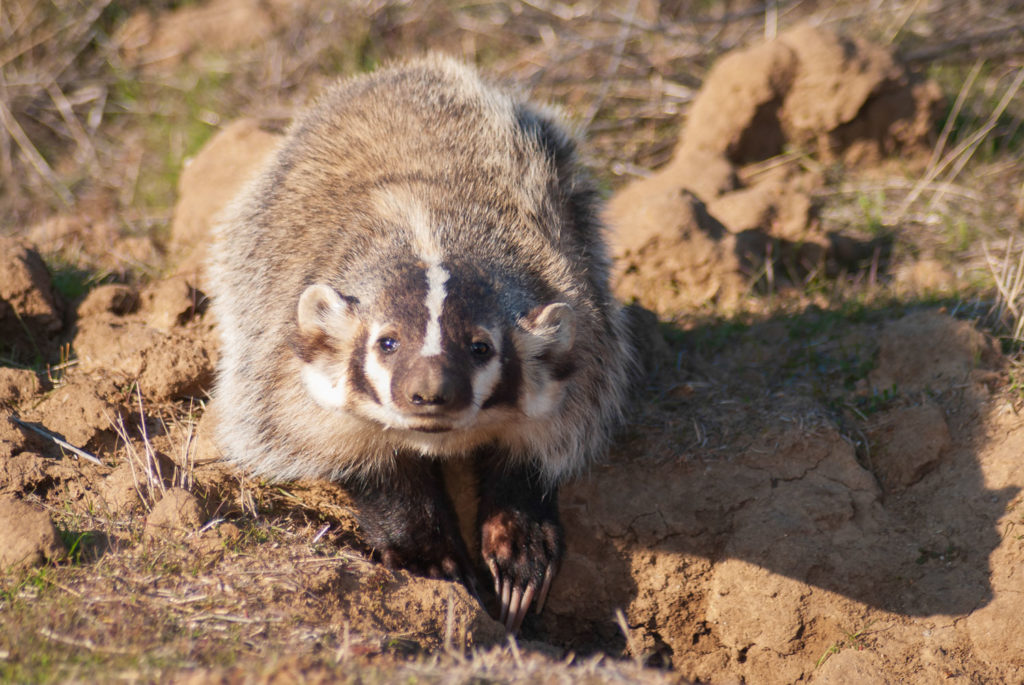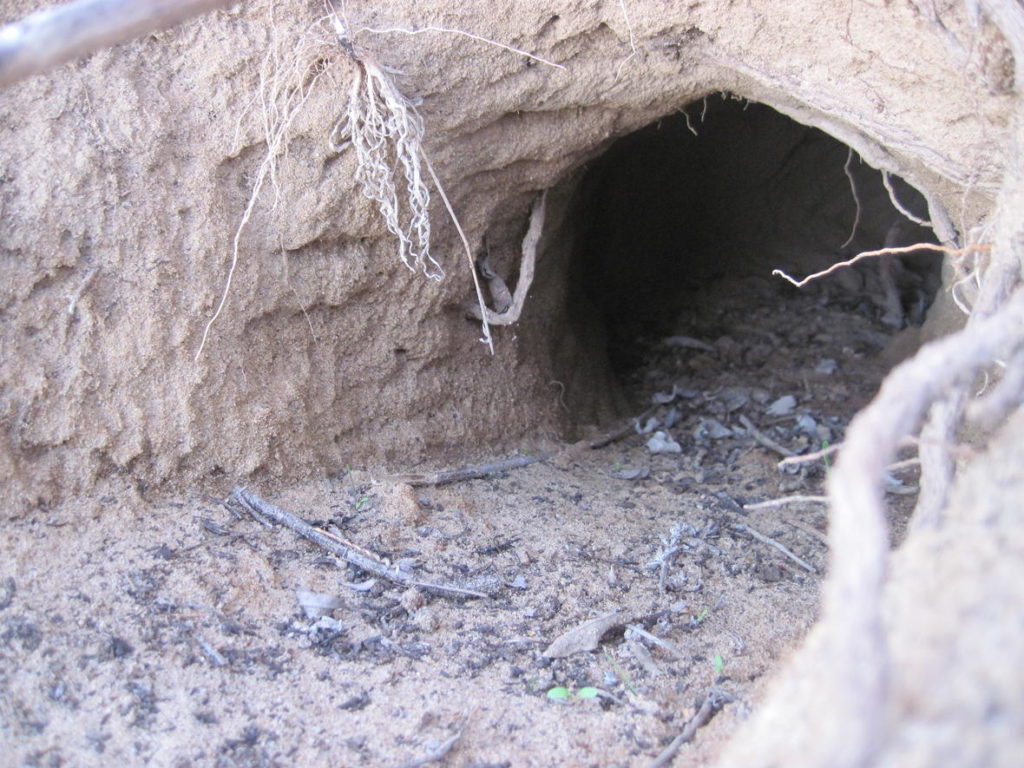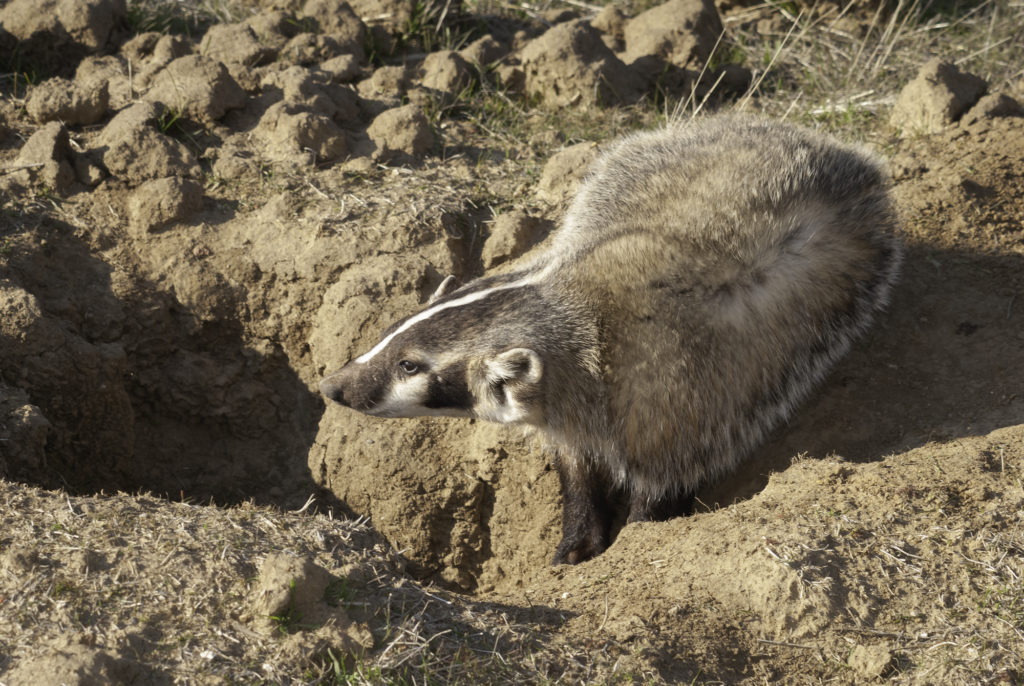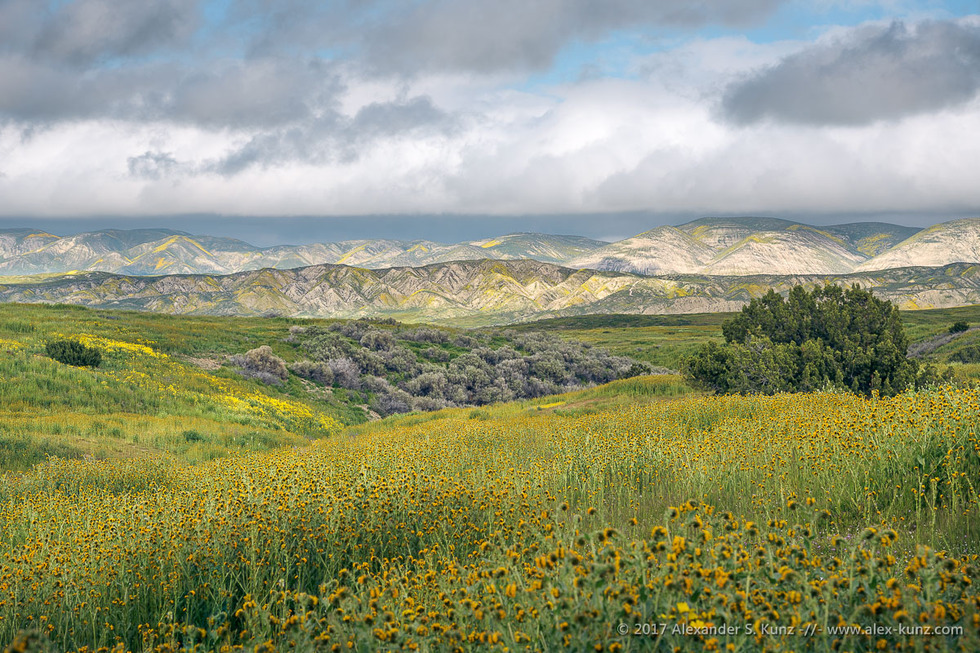Taxidea taxus
- Species of Special Concern – California Department of Fish and Wildlife

One of the largest members of the weasel family, the American badger elusively spends much of its time burrowing in search of prey and shelter—so you aren’t likely to see one very often. These long, flat, stocky mammals can be found across the western United States, including throughout the state of California. They average 15-20 pounds and are easily identifiable by their black and white mask and distinct white strip from their snout to their back. And if the face doesn’t give them away, look for their massive foreclaws.
Diet and Behavior
Badgers are mostly carnivorous with a diet consisting primarily of small mammals such as ground squirrels, rats, and gophers that they dig out of their burrows as well as rattlesnakes and other reptiles. They also eat ground-nesting birds like burrowing owls, insects, honey, some plant materials, and even mushrooms. During the time of year when food is abundant, badgers can gain several pounds. Their foreclaws’s nerve endings are especially sensitive, which is one of the many characteristics that make them so adept at burrowing.

Adding to their elusiveness is the fact that badgers are nocturnal in areas with a consistent human presence. In remote areas with little human interference, they generally hunt and move around during the day. Badgers are mostly solitary creatures, except during the breeding season which occurs in the late summer. Females’ unique trait of delayed implantation results in babies born months after mating in March and April. Males are known to have multiple female partners. Females usually have two to five babies at a time, and the young are born blind and furred.
A badger will typically have multiple burrows, each used for a different purpose such as sleeping, hunting (where they will wait for prey to come near), food storage, and breeding. Interestingly, they do not hibernate during the winter. Badgers can generally be expected to live up to 10 years in the wild. They have few natural predators due to their ferocious defensive capabilities, including thick hide, long claws, biting ability, and fighting noises. As they often eat rattlesnakes, badgers seem to be unharmed unless bitten on the nose.

Habitat
Badgers prefer large open areas like grasslands. These areas are generally good for burrowing and support badgers’ preferred prey. The species has also made use of open agricultural lands, riparian areas, and sparse chaparral. Regardless of habitat type, badgers are threatened by development and habitat fragmentation.
Central Coast Badgers
Badgers are found in many open areas throughout the Central Coast region. One of the best places to see badgers in our area is the Carrizo Plain National Monument. This 200,000-acre piece of public land supports one of the last intact remnants of the once-expansive San Joaquin Valley grassland ecosystem. The national monument’s open native grasslands are home to kangaroo rats, ground squirrels, burrowing owls, snakes, and lizards—all prey of the badger.

The species can also be found in the Los Padres National Forest. They are relatively prevalent in the Santa Lucia Ranger District of San Luis Obispo County. They were even considered for listing as a Management Indicator Species by the Forest Service, but the agency decided against it due to the species’ adaptability. However, the badger is considered a Species of Concern in the Los Padres National Forest.
In 2017 Ventura County began a process of establishing protections for wildlife corridors throughout the county. These protections would discourage development in areas important for habitat connectivity. One of the many species that was identified as benefiting from the the proposed protections was the American badger. You can learn more about this proposal, which is up for a vote by the Board of Supervisors on March 12, 2019, and submit a letter of support by clicking here.






